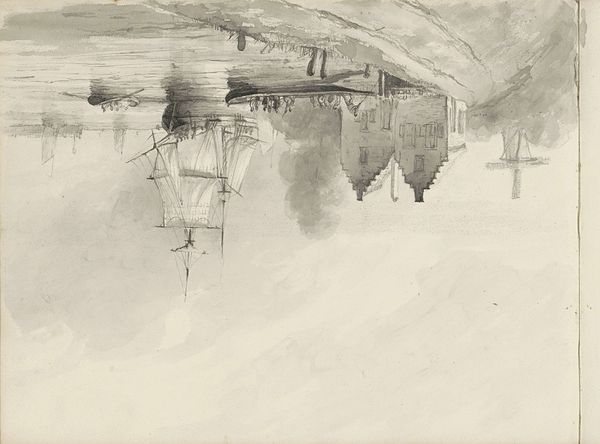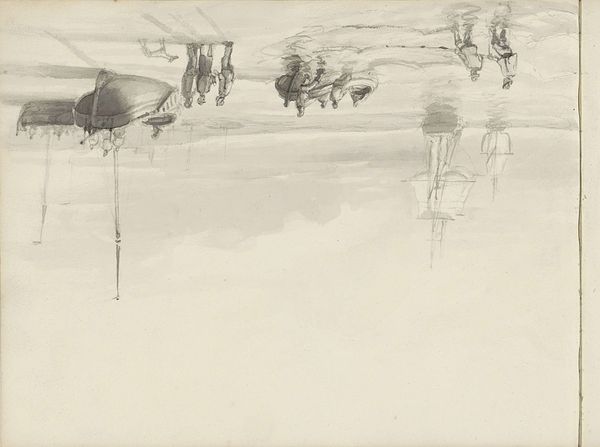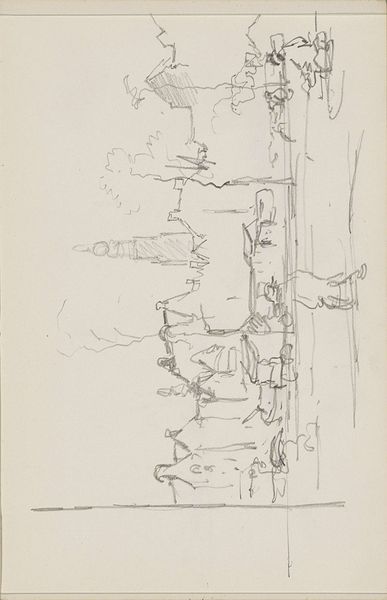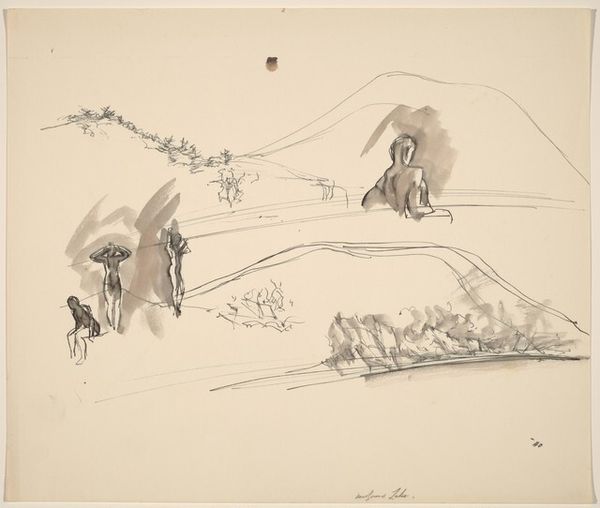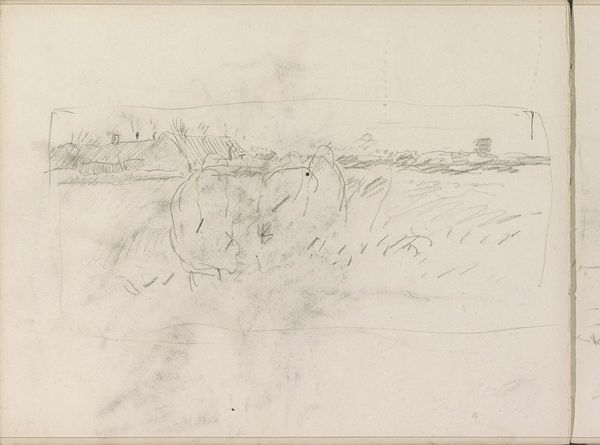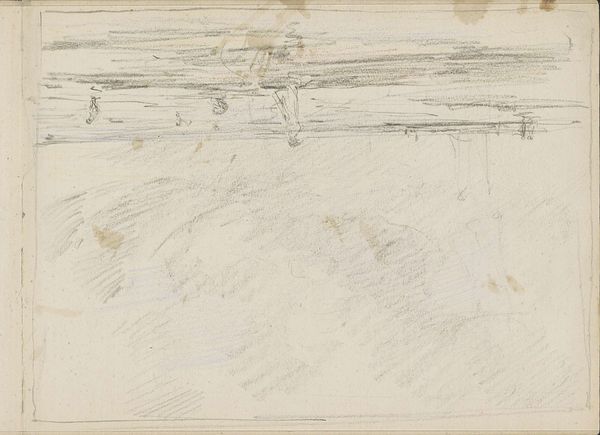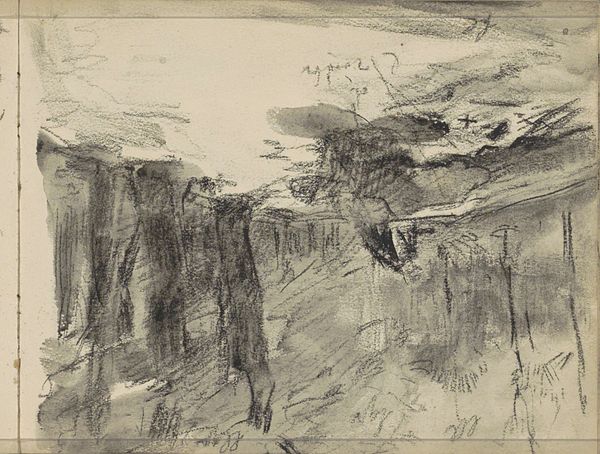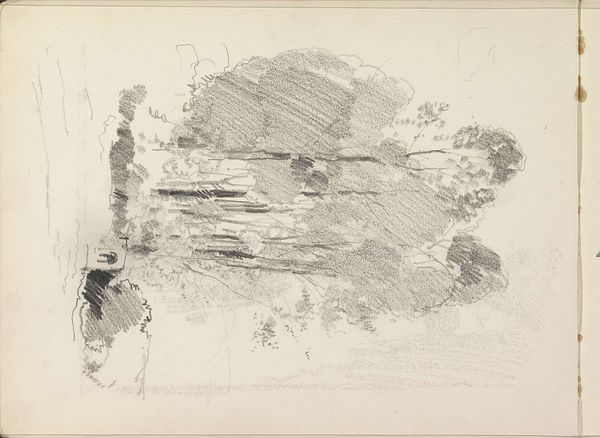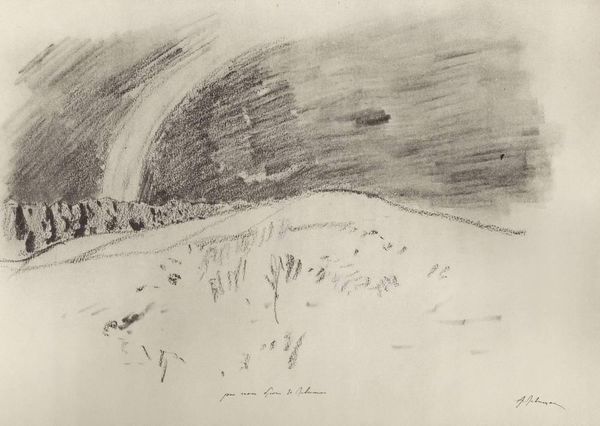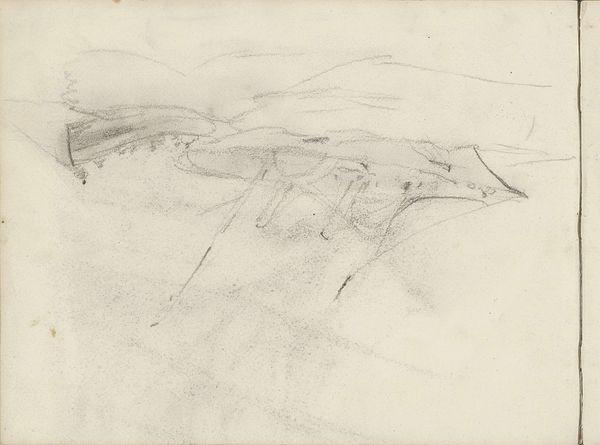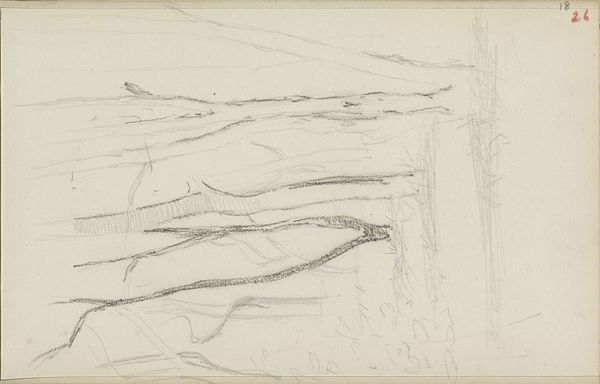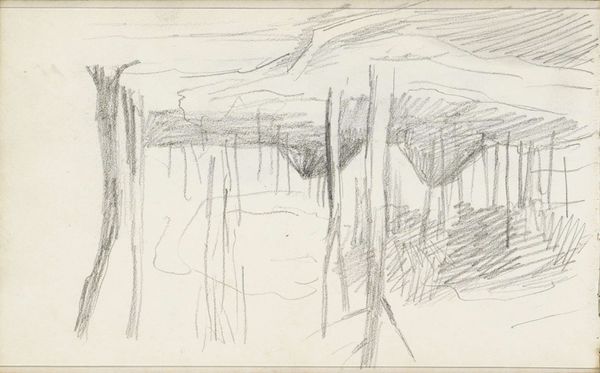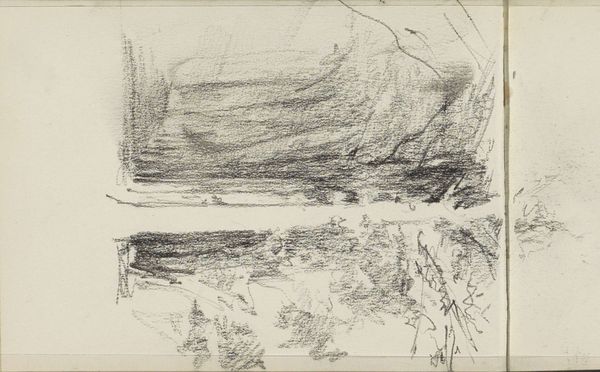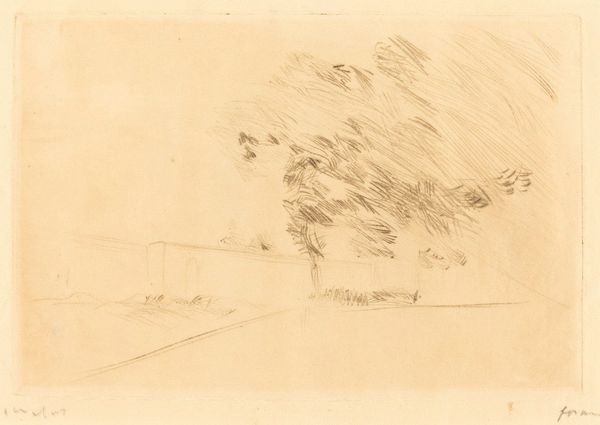
Mannen in een roeiboot varend richting een zeilschip c. 1825 - 1875
0:00
0:00
drawing, pencil, pen
#
drawing
#
amateur sketch
#
light pencil work
#
quirky sketch
#
pencil sketch
#
sketched
#
incomplete sketchy
#
landscape
#
figuration
#
personal sketchbook
#
idea generation sketch
#
sketchwork
#
pencil
#
pen
#
genre-painting
#
initial sketch
Copyright: Rijks Museum: Open Domain
Editor: This is "Men in a Rowboat Sailing Towards a Sailing Ship," a pencil drawing by Petrus Johannes Schotel, made sometime between 1825 and 1875. The quick, light lines give it such a sense of immediacy. It feels like a fleeting observation, captured rapidly. What do you see in this piece, especially considering the material and the context it was created in? Curator: The medium, a simple pencil sketch, speaks volumes here. Schotel isn't presenting a finished, idealized product for the market, but rather exploring the raw mechanics of maritime labor. We're witnessing the initial stages of image making – the material grounding from which "high art" often distances itself. Consider the paper itself; its availability and cost influenced the scale and scope of the work. Editor: So you’re saying the choice of pencil is deliberate, pushing against expectations of maritime painting? Curator: Precisely. Traditionally, maritime paintings were grand oil paintings celebrating naval power and trade. This sketch, however, seems to focus on the everyday toil involved in sailing. Look at the figures in the rowboat – the labor of propelling the boat is evident, rendered with unrefined, utilitarian strokes. Schotel directs our attention to the material conditions of seafaring, stripping away romanticism. Do you see the marks? The imprecision suggests haste. Editor: I do. The haste speaks to the actual act of drawing on location and really brings up questions about how different life on the sea would have been in 1825. Curator: Yes. And also think about the role of sketching in the 19th century – as a tool for observation, documentation, and the generation of ideas. This piece is valuable because it invites reflection on artistic production itself, emphasizing labor and the often-invisible processes behind the images we consume. What has shifted in your understanding of the drawing after thinking of materials and the making of the artwork? Editor: It definitely humanizes the process of creating art and also points out how materials and initial drawings can also stand for themselves and their historical context. Thanks!
Comments
No comments
Be the first to comment and join the conversation on the ultimate creative platform.
